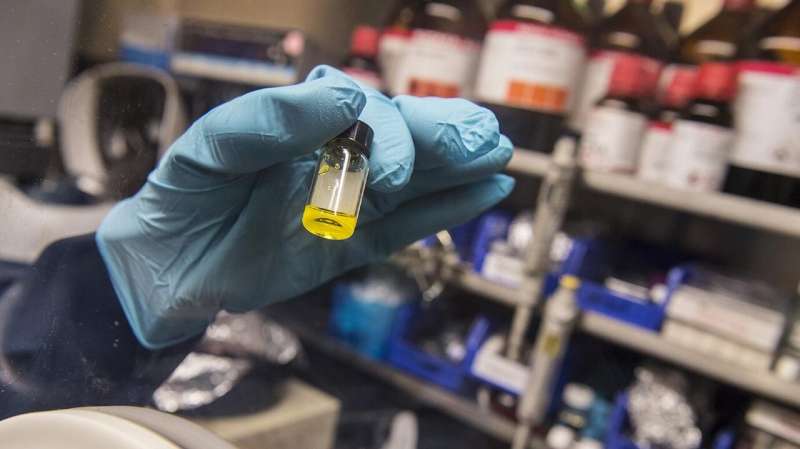This article has been reviewed according to Science X's editorial process and policies. Editors have highlighted the following attributes while ensuring the content's credibility:
fact-checked
peer-reviewed publication
trusted source
proofread
New method for altering vinyl systems has applications in drug and materials science

Constructing complex molecules from simpler ones is pivotal for the development of pharmaceuticals, materials science, and various scientific domains.
But one reaction, known as the nucleophilic vinylic substitution or SNV reaction, which could allow chemists to build even more complex structures, has been less studied because it's notoriously difficult to control.
In a study published in Nature, researchers from the University of Chicago and the University of Pittsburgh have introduced a new method for creating connections between carbon atoms using the SNV reaction.
Led by graduate student Miao Chen, in the laboratory of Prof. Guangbin Dong, their research offers a novel approach to creating bonds essential for crafting intricate molecules with exact structures. The scientists hope it propels the development of advanced materials and bioactive compounds, creating profound impacts across academic and industrial landscapes.
"Our study delves into mechanisms that haven't been extensively explored and offers deeper insights into this transformative reaction," said Chen. "This could be a valuable contribution to pharmaceutical research and help many people."
Studying the reaction
An SNV reaction occurs in a particular type of chemical structure called "vinyl systems," which contain a carbon-carbon double bond. Vinyl systems are important in creating everyday essentials, from PVC piping and vinyl records to binders that keep ibuprofen tablets intact. But they are known for being particularly intricate and inflexible.
In an SNV reaction, a molecule, called a nucleophile, swaps an atom in a vinylic molecule by sharing its electrons—but this process has been challenging to control.
To address this difficulty, Chen and the team developed a new approach. Their breakthrough came when the group designed a strain-release mechanism to relax molecular tension, overcoming previous hurdles that have plagued investigators. They furthered their progress by using boron-based compounds to help accelerate and carefully guide these molecular changes.
Dong said he was intrigued once they observed unexpected phenomena and began investing significant effort into understanding why certain reactions are selective and exhibit varying levels of reactivity.
"Our approach goes beyond traditional methods and lets us build complex molecules with exceptional efficiency and accuracy," said Chen.
Computational confirmation
To validate their experimental research, the team collaborated with computational chemists at the University of Pittsburgh, who used computer simulations and calculations to support the surprising pathway—giving an in-depth explanation for what the Dong lab saw in their trials.
"The identification of the mechanism was one of the most challenging aspects of our research," said Chen. "We could only confirm our reaction through extensive experimental and computational studies."
Their research marks a significant advancement in synthetic chemistry, equipping scientists with a powerful tool for precise molecular construction. By harnessing SNV reactions and understanding strain-release mechanisms, the scientists said, the work not only addresses longstanding challenges but could also drive the development of new advanced materials and bioactive compounds.
"Although the full utility is currently unknown," Dong said, "the compounds made by our method exhibit a fascinating and unique structure that provides a platform for people to study their properties."
More information: Miao Chen et al, Stereospecific alkenylidene homologation of organoboronates by SNV reaction, Nature (2024). DOI: 10.1038/s41586-024-07579-7
Journal information: Nature
Provided by University of Chicago





















